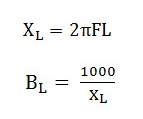SCTP, or Stream Control Transmission Protocol, is a transport layer protocol like TCP, designed for reliable and ordered delivery of data. It supports multiple streams of data within a single connection, providing features like message framing, congestion control, and error detection. Unlike TCP, SCTP can transmit multiple streams of data simultaneously within a single connection, offering enhanced resilience to network failures and improved performance for applications requiring reliable delivery.
The advantages of SCTP over TCP include:
- Multi-streaming: SCTP supports multiple streams of data within a single association, allowing for concurrent transmission of independent data streams. This feature enables better utilization of network resources and improves overall throughput.
- Message-oriented: SCTP treats data as messages rather than a continuous stream, preserving message boundaries during transmission. This feature simplifies application development and enhances message-level reliability.
- Improved fault tolerance: SCTP supports multi-homing, where endpoints can have multiple IP addresses, providing resilience against network failures or outages. It can continue communication using an alternate network path if one fails, ensuring continuous connectivity.
UDP, or User Datagram Protocol, and SCTP differ primarily in their reliability and connection-oriented nature. UDP is a connectionless protocol that offers minimal error checking and no guarantees of delivery or order. It is suitable for applications requiring low overhead and where occasional data loss is acceptable, such as real-time streaming or VoIP.
RTP, or Real-time Transport Protocol, and SCTP serve different purposes in network communication. RTP is primarily used for transmitting audio and video streams over IP networks, providing mechanisms for timing, synchronization, and payload format identification. In contrast, SCTP is a general-purpose transport protocol designed for reliable and ordered delivery of data, supporting multiple streams and enhanced error detection mechanisms. While RTP focuses on real-time multimedia transmission, SCTP caters to broader applications requiring reliable data transfer with congestion control and error recovery.
